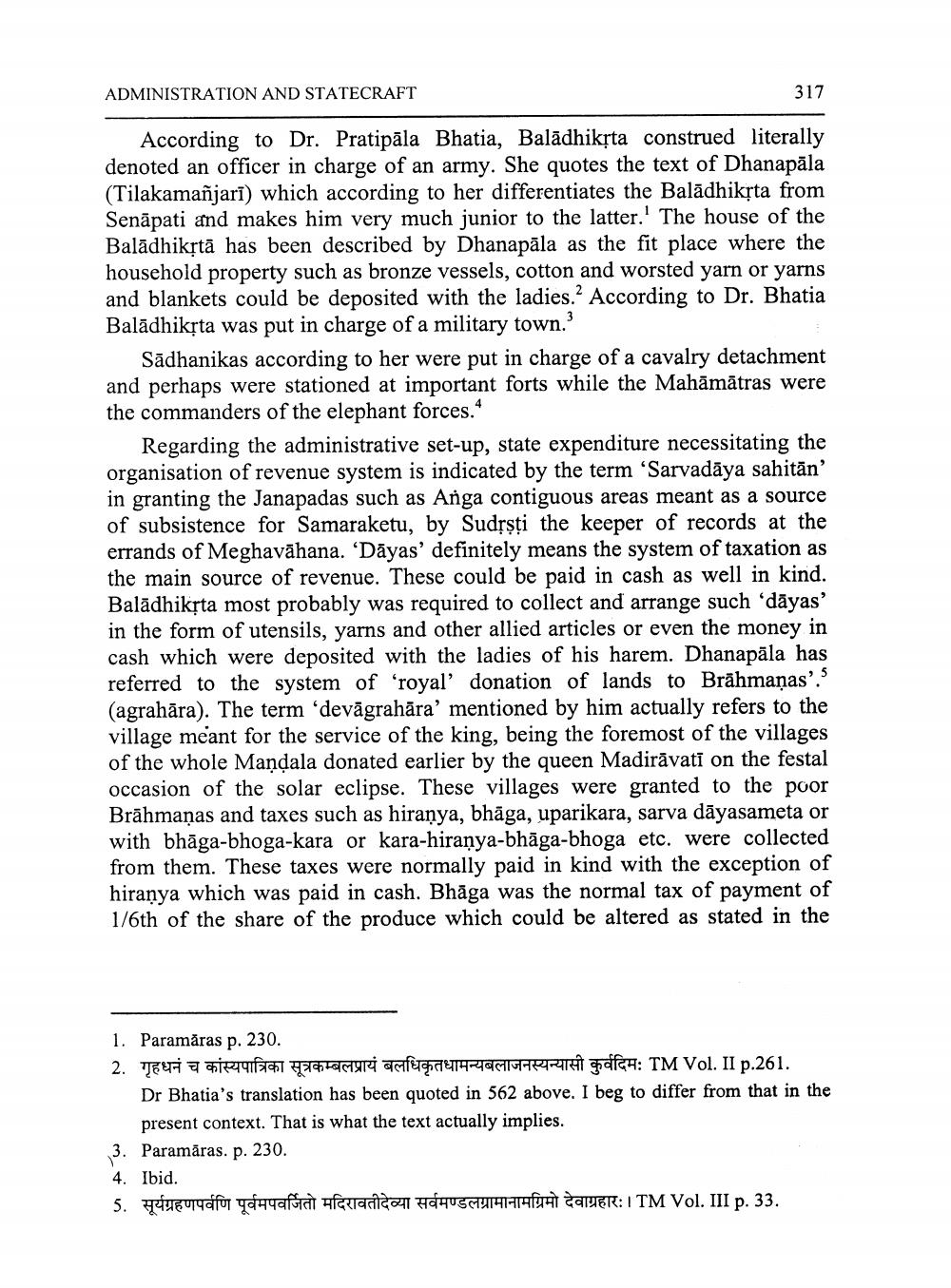________________
ADMINISTRATION AND STATECRAFT
317
According to Dr. Pratipāla Bhatia, Balādhikrta construed literally denoted an officer in charge of an army. She quotes the text of Dhanapāla (Tilakamañjarī) which according to her differentiates the Balādhikrta from Senāpati and makes him very much junior to the latter. The house of the Balādhikstā has been described by Dhanapāla as the fit place where the household property such as bronze vessels, cotton and worsted yarn or yarns and blankets could be deposited with the ladies. According to Dr. Bhatia Balādhikrta was put in charge of a military town.
Sādhanikas according to her were put in charge of a cavalry detachment and perhaps were stationed at important forts while the Mahāmātras were the commanders of the elephant forces.
Regarding the administrative set-up, state expenditure necessitating the organisation of revenue system is indicated by the term 'Sarvadāya sahitān' in granting the Janapadas such as Anga contiguous areas meant as a source of subsistence for Samaraketu, by Sudrsţi the keeper of records at the errands of Meghavāhana. 'Dāyas' definitely means the system of taxation as the main source of revenue. These could be paid in cash as well in kind. Balādhikrta most probably was required to collect and arrange such 'dāyas' in the form of utensils, yarns and other allied articles or even the money in cash which were deposited with the ladies of his harem. Dhanapāla has referred to the system of 'royal' donation of lands to Brāhmaṇas'.S (agrahāra). The term 'devāgrahāra' mentioned by him actually refers to the village meant for the service of the king, being the foremost of the villages of the whole Mandala donated earlier by the queen Madirāvati on the festal occasion of the solar eclipse. These villages were granted to the poor Brāhmanas and taxes such as hiranya, bhāga, uparikara, sarva dāyasameta or with bhāga-bhoga-kara or kara-hiranya-bhāga-bhoga etc. were collected from them. These taxes were normally paid in kind with the exception of hiranya which was paid in cash. Bhāga was the normal tax of payment of 1/6th of the share of the produce which could be altered as stated in the
1. Paramāras p. 230. 2. TOT DIRIY Eliteseri afeg914ROCARRIL Safe: TM Vol. II p.261.
Dr Bhatia's translation has been quoted in 562 above. I beg to differ from that in the
present context. That is what the text actually implies. 3. Paramāras. p. 230. 4. Ibid. 5. Uporarfo yanaftat afecanda dusdurf TAVER: I TM Vol. III p. 33.




